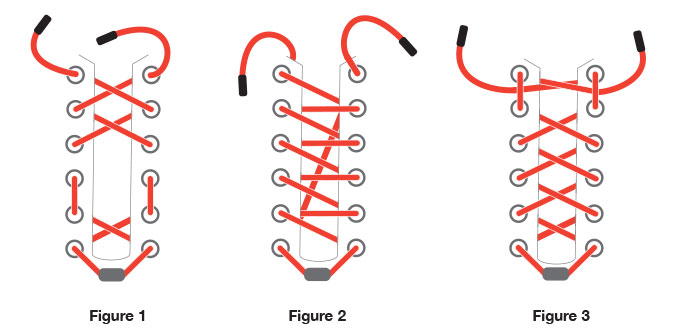In a poll Referee published last year, foot pain was reported by 30 percent of respondents. Feet are as different as the people that come with them. While no one foot type is “better” than another, each has some advantages and disadvantages that need to be individually addressed.
While most feet can fit into the typical officiating shoes, many people have trouble finding shoes that fit comfortably. A well-made, good-fitting shoe can make the difference between a comfortable game and a long, painful one. Shoe problems can limit your mobility, and can cause a distraction when you need to focus on more important things.
A flat foot, one with little or no arch, is not a problem in and of itself. Officials with flat feet may develop tendinitis or they may just fatigue quicker due to the extra workload required of the muscles of the lower leg to absorb the pressure placed on them. That foot type requires a more supportive shoe. An overly soft-soled shoe actually allows the foot to flatten out more and can exacerbate the problems associated with flat feet.
People with symptomatic flat feet will frequently benefit from a well-fitting over-the-counter shoe insert or orthotic device to help the foot function more normally. However, placing an ill-fitting “arch support” or arch “cookie” in the shoe to try to build up the arch can create more problems than it solves. Occasionally, a custom-made prescription orthotic device is required. Those are made by taking an impression of each foot and sending the impressions to a lab where custom devices are made to exactly match.
Conversely, a high arched foot has more problems with pressure because it does not flex and absorb pressure as well. High-arched feet have a tendency to develop callouses. That foot type is also prone to stress fractures, toe deformities and generalized pain and fatigue after strenuous activity, due to its inability to absorb pressure. That foot type will benefit from a softer-soled shoe, one made with a soft insole or an additional soft insole placed in the shoe.
 LACING CAN HELP
LACING CAN HELP
The way the shoe is laced can have a big impact on how it feels and fits. People with high-arched feet, those with a high or bony instep or bony prominence on top of the foot would benefit by adjusting the lacing pattern of the shoe as shown in figure 1. Referees who have trouble with toe irritation would benefit from the lacing pattern shown in figure 2. Finally, if the shoe has a tendency to slip up and down in the back or heel of the shoe, the heel-lock lacing pattern will make for a more snug fit in the heel area as seen in figure 3.
FIGURE 1: High Arch or Instep
Working up from the bottoms, at the second set of eyelets, run the laces directly to the third eyelets to loosen the fit over your arch.
FIGURE 2: Toe Pressure Relief
Run the end of the lace from the bottom eyelet by your big toe to the top of the opposite side. Lace the other end in a zigzag fashion. That lifts the shoe off your toes.
FIGURE 3: Heel Lock
Lace the shoe as you normally would, but at the top two eyelets run the laces vertically, creating loops. Tie the laces through the loops to cinch the upper extra tight around your ankle.
Officiating is hard enough when you feel your best. The last thing you need is painful, aching feet. Utilizing some of the tips in this column may keep your feet comfortable so that you can focus your attention where it needs to be — on the game you’re officiating. Don’t let painful feet or ill-fitting shoes keep you from calling a great game.
What's Your Call? Leave a Comment:
Note: This article is archival in nature. Rules, interpretations, mechanics, philosophies and other information may or may not be correct for the current year.
This article is the copyright of ©Referee Enterprises, Inc., and may not be republished in whole or in part online, in print or in any capacity without expressed written permission from Referee. The article is made available for educational use by individuals.
















